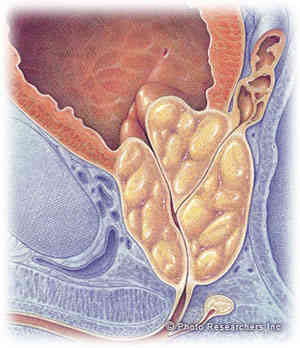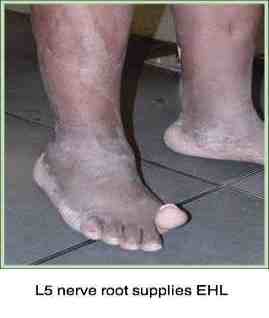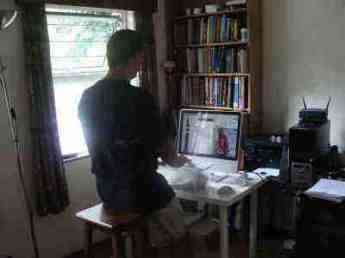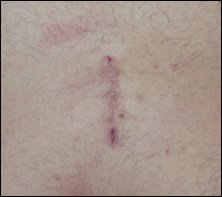| Back to Back Issues Page |
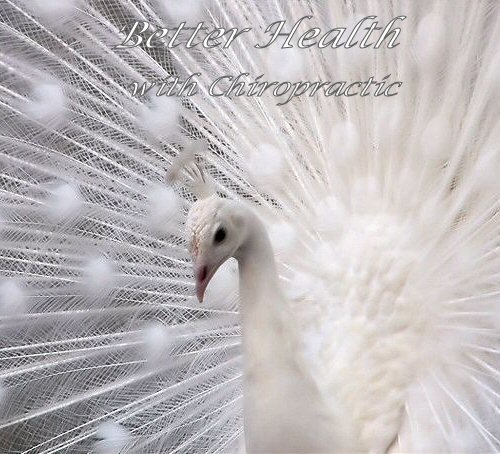 |
|
CHIROPRACTIC HELP #27: POST CHIROPRACTIC ADJUSTMENT PAIN January 08, 2012 |
DearPOST CHIROPRACTIC ADJUSTMENT PAINGreetings to all our readers and a happy and healthy 2012. Just a reminder that sparkling good health will come by and large in 2012 to those who consciously make the right choices. It's no coincidence, nor a matter of luck, good or bad... True, for some a terrible car accident not of your making, a sickly genetic profile (I am a Cystic Fibrosis carrier) or a job in a company that goes belly up can have dreadful repercussions. But, mostly, good health comes to those who follow the known rules of life. That means taking holidays, getting exercise and eating healthily... it's very definitely a matter of choices, not of luck for the great majority of us. This month we look at
(Keywords: POST CHIROPRACTIC ADJUSTMENT PAIN, tingling in legs and feet, severe leg pain, lower back and leg pain, prostate cancer) PAINProbably a full 90% of chiropractic patients coming for treatment have torn, inflammed, swollen or arthritic tissue that is at the heart of their condition. Stretching, massaging and adjusting of such tissues inevitably causes a degree of "after-treatment discomfort or pain." It's no different for the physiotherapist, dentist, surgeon - ever had your impacted wisdom teeth out? Been to a physiotherapist given the task of mobilising a knee or ankle post-surgery? Have a friend who has had spinal surgery? Some post treatment pain is the norm. But how much is some? Letter to Chiropractic Help"I am 60 years old and I have been receiving regular chiropractic care for the past two years. I started care for sciatic pain which I had on only one occasion before starting treatment. I have since had a few more bouts of sciatica but have not had any sciatic pain for over a year now.What I do have is pain in my neck, shoulders and back for 24 to 48 hours after my adjustment. Sometimes it is really unbearable but always subsides in a couple of days. I do not feel that this is a normal situation since I have never had this type of pain and achey feeling prior to care. My chiropractor says it is not related to the adjustment since it happens the day after my adjustment. Why do I have this pain and aching post adjustment??"
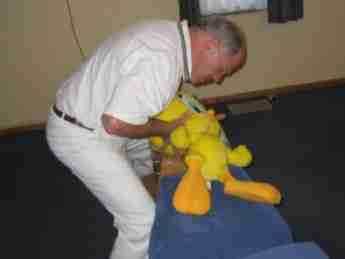
Is this acceptable, is it normal?My answer is an emphatic NO, and personally I think this person's chiropractor is in denial. If you have "unbearable pain" regularly the day after your chiropractic adjustment, then it's clearly related to the treatment.But... and it's an important but, a certain degree of what the Dutch call "na-pijn" - discomfort, and occasionally pain for one or possibly two days after a treatment - is not uncommon. And provided the overall benefit of the treatment is clear to both patient and doctor, then it is usually acceptable to both parties. The alternative is that the chiropractor must give a treatment that is so gentle that probably little is achieved. But "unbearable pain"?How should your doctor react if you had this complaint? How would I react?
This raises an age-old question: Should every patient get a full spine adjustment regardless of the initial complaint? My own opinion is NO, but there are many chiropractors who would disagree. Aside: I had a new patient this week complaining of severe midback pain of several weeks' duration. She has previously consulted chiropractors for various complaints but, if her neck is ever adjusted, she gets severe headaches for a few months. She asked me not to touch her neck, where she had absolutely no complaints. However, she was in a car accident some years ago and clearly has silent subluxations in her lower neck. The range of motion of her cervical spine was markedly reduced for a young woman. I told her that whilst I respected her request, once the midback has settled down, I was going to ask permission to adjust her lower neck. Otherwise she is certain to get IMMOBILISATION ARTHRITIS ... the most common form of arthritis in the neck and in fact all fixated joints. Yes, it's possible that she may have significant and even unbearable headaches for a period after the treatment, though I think this unlikely. The headaches probably resulted from a ATLANTO OCCIPITAL JOINT adjustment which I would avoid. This person's fixations are in the lower neck. To ignore them means a great likelihood of ARM PAIN or other
conditions like frozen shoulder, tennis elbow and ahref="https://www.chiropractic-help.com/carpal-tunnel-syndrome.html"> carpal tunnel syndrome. But everything by discussion and with the patient's full permission. It is after all your body and you have every right to state plainly to all your doctors what they may, and what they may not do to you. We treat our patients with respect. VULNERABLEWhat is certainly true is that your spine may be vulnerable for a period after your chiropractic adjustment. It's unwise to travel long distances, play heavy sport, garden or do any silly things for a day or two after your chiropractic adjustment.Any POST CHIROPRACTIC ADJUSTMENT PAIN if you ignore this advice lies at your own door! Be sensible after your treatment. If your post chiropractic adjustment pain occurs regularly after your treatment, and you haven't been playing "silly buggers"! then it's most likely directly related to the treatment. TWO ADULTSIn this situation, you should speak directly to your chiropractor about any post chiropractic adjustment pain. If s/he doesn't take you seriously, vote with your feet.In the above case, I feel a little sad. Said chiropractor has clearly helped the patient with the lower back pain and sciatica. Nevertheless he is going to lose his patient in all likelihood. Two adults ought to be able to speak plainly, and honestly, to one another without offense or embarrassment. The days of "I am the doctor and you are the patient, you will do what I tell you" are fortunately long gone. The prostate glandThe prostate is a particularly troublesome gland for the older male, usually 50 plus. Non-bacterial prostatis can be particularly painful as it responds to virtually no medical treatment. It's not an infection. The first sign is difficulty having a sweet pee, though prostate cancer, the leading cancer killer of men can be silent in the initial stages. Decreased normal blood supply to the gland is one of the causes of the pain. A good understanding of the PATHOPHYSIOLOGY OF ATHEROSCLEROSIS is the beginning of getting on top of this nuggety glandular problem.
ENLARGED PROSTATE BULGING INTO THE BLADDERThree vital nutrients:
SEVERE LOW BACK PAIN RULES
Chiropractors are frequently faced with patients with very severe disc injuries causing burning leg pain, numbness and a weakness in the leg. If there is paralysis of the leg muscles, typically an inability to raise the big toe or the heel off the ground, then surgery is usually immediately recommended. Skillful chiropractic adjustments may save you from surgery, but a strict conforming to the following rules is ABSOLUTELY VITAL if you have very severe lower back and leg pain.
If you can't (or won't?) follow this regimen, to the letter, for several weeks, occasionally six, your chiropractor probably won't win if you have a prolapsed disc with a foot drop. Make a choice: Follow these rules to the letter, otherwise don't waste your time and money. Go straight away for LOWER BACK SURGERY ... skilfully done, it can be very successful.
There are a very few exceptions to these rules. If you have doubts, then discuss each of them with your chiropractor. Sitting, very occasionally, for example actually brings relief, and lying down aggravates the pain in the leg. But that's the exception that proves the rule. PER KIND FAVOURPlease ask your chiropractor for the name of
Jot them down, and send them to me please. Or ask him or her to
CONTACT me...
"Every exaggeration of the truth once detected by others destroys our credibility and makes all that we do and say suspect." Stephen R. Covey Yours in better health,
Bernard Preston DC PS. Feel free to forward this to family and friends. |
| Back to Back Issues Page |
